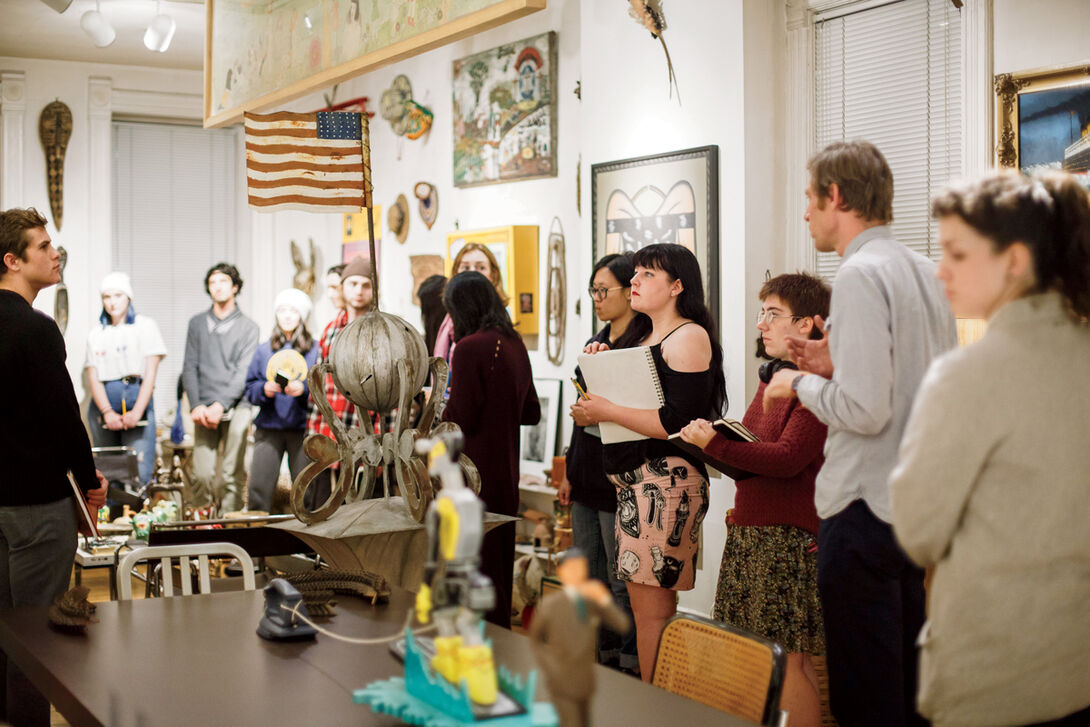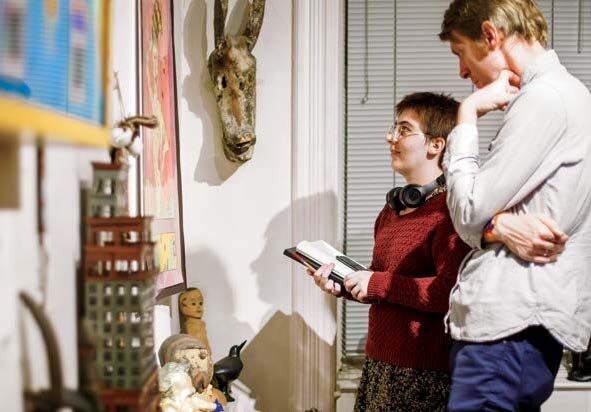
Field Trip
An Artist's Life
Students examine the intersections of art and life at the Roger Brown Study Collection.

A group of students ascend a staircase into an eclectic world of objects and art, both high and low, set among the trappings of every day life at SAIC’s Roger Brown Study Collection in Lincoln Park. Each year Lecturer Tim Nickodemus takes his Research Studio for Transfer Students class here to illustrate the connections between their art and their lives.
An essential aspect of Roger Brown’s artistic path was the creation of home, studio, and garden settings that integrated his collection of art and objects. As the end of his life neared in the late '90s, Brown donated the collection, two of his homes, and many of his own paintings to SAIC, entrusting the School with his legacy and providing a unique and invaluable resource for students, especially new undergraduate students.
“Being in a house makes them think about how they set up their home studio and home environment to reflect their artistic interests and be very intentional about the way one lives as an artist,” says Nickodemus.


Nickodemus asked students to use the collection for research on a project dealing with obsessions. In class, the students reveal a range of ideas from the obsessive organization of fine design to looking at the world through the eyes of a cat. They observe, photograph, and sketch as they wind their way through the living room, bedroom, bathroom, and kitchen, considering how the objects Brown collected relate to each other, to his work, and ultimately their own practice.

About half an hour before the class ends, students return to the first-floor studio to integrate their research into an in-class assignment. They have to create a replica of a room and the objects related to their obsession using only white paper, tape, and scissors. In between cutting and taping, Nicolas Foyer (BFA) says of the project, “I never really noticed my process, and now I’m keying into why I do things.” Roger Brown Study Collection Curator Lisa Stone says Brown believed perceptions of an artist’s work are amplified through the lens of the artist’s life.
